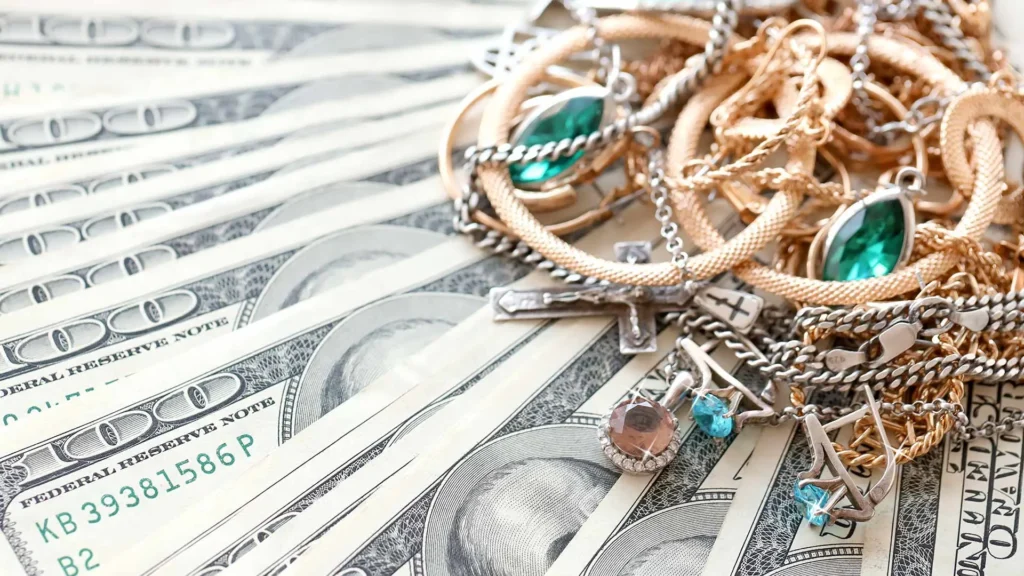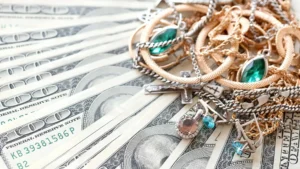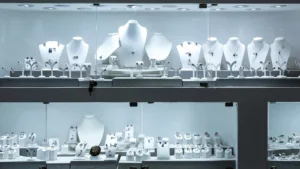The choice of metal in jewelry is as significant as that of gemstones or the design itself. The metal not only provides a piece’s structure and durability but also profoundly influences its aesthetic appeal, longevity, care requirements, and price. From the warm glow of gold to the elegant sophistication of platinum and the versatile charm of silver, understanding the properties and characteristics of different jewelry metals is essential for both jewelry enthusiasts and those looking to make a meaningful purchase.
This comprehensive guide will delve into the most popular metals used in jewelry, exploring their unique qualities, advantages, disadvantages, and ideal applications. Whether you’re selecting a setting for a gemstone, choosing a metal for everyday wear, or considering a piece’s long-term investment, this knowledge will empower you to make informed decisions and select jewelry you’ll treasure for years to come.
The Timeless Allure of Gold:
Gold has been valued for its beauty and rarity for millennia. In jewelry, gold is rarely used in its pure 24K form due to its softness. Instead, it is alloyed with other metals to increase its durability and alter its color. Karatage indicates the percentage of pure gold in the alloy:
- 24K Gold: Pure gold, known for its rich yellow color but very soft and easily scratched. Primarily used for bullion or intricate, less-worn pieces.
- 22K Gold: Contains 91.6% pure gold, offering a deeper yellow hue and slightly more durable than 24K. Often used in traditional or ethnic jewelry.
- 18K Gold: Contains 75% pure gold, striking a balance between color richness and durability for everyday wear. A popular choice for fine jewelry.
- 14K Gold: Contains 58.3% pure gold, offering greater durability and scratch resistance, making it a practical choice for frequently worn pieces like engagement rings. Often more affordable than higher karatages.
- 10K Gold: Contains 41.7% pure gold, the most durable and often most affordable gold option. Less vibrant in color compared to higher karatages.
Beyond karatage, gold’s color is determined by the metals it’s alloyed with:
- Yellow Gold: Gold’s natural color, enhanced by alloys like copper and zinc. Classic, warm tone.
- White Gold: Created by alloying yellow gold with white metals like nickel, palladium, or silver, then typically rhodium-plated for a bright, silvery finish. Requires re-plating over time to maintain its whiteness.
- Rose Gold: Gets its rosy hue by alloying yellow gold with copper. The amount of copper determines the intensity of the pink color. Offers a romantic, vintage appeal.
The Elegant Sophistication of Platinum:
Platinum is a naturally white, lustrous, and rare precious metal, valued for its strength, durability, and hypoallergenic properties. Unlike white gold, platinum does not require plating and retains its silvery-white color. It’s also denser than gold, giving jewelry a substantial feel. Though often more expensive than gold, its durability and lasting beauty make it a popular choice for significant pieces like wedding bands and heirloom jewelry.
The Versatile Charm of Silver:
Silver, particularly sterling silver (92.5% pure silver alloyed with copper), is a popular jewelry choice due to its affordability and reflective luster. Though softer than gold and prone to tarnishing due to reaction with sulfur, regular cleaning can easily restore its shine. Silver offers a versatile backdrop for various gemstones and designs, from delicate and intricate to bold and contemporary.
Exploring Alternative Metals:
Beyond traditional precious metals, other metals have gained popularity in jewelry for their unique properties and aesthetics:
- Palladium: A naturally white metal from the platinum family, offering similar hypoallergenic properties and durability at a potentially lower cost.
- Titanium: A lightweight yet incredibly strong and corrosion-resistant metal. Often used in modern, industrial-style jewelry, as well as for its hypoallergenic properties.
- Stainless Steel: A durable, affordable, and hypoallergenic alloy known for its resistance to rust and tarnish. A popular choice for contemporary and casual jewelry.
Choosing the Right Metal for Your Jewelry:
The best metal for your jewelry depends on several factors:
- Budget: Gold and platinum are generally more expensive than silver and alternative metals. Karatage significantly affects gold price.
- Lifestyle: For everyday wear, durability is key. Higher-karat gold (14K, 10K), platinum, and strong alternative metals like titanium and stainless steel are good choices.
- Skin Sensitivity: Platinum, palladium, titanium, and hypoallergenic stainless steel are excellent choices for individuals with metal allergies.
- Desired Aesthetic: The metal’s color and luster should complement your style and the gemstones in the piece. Consider the warmth of yellow gold and rose gold versus the coolness of white gold, platinum, and silver.
- Maintenance: Silver requires regular cleaning to prevent tarnish, while white gold needs re-plating. Platinum is relatively low-maintenance, and gold’s maintenance depends on its karatage.
- Longevity & Investment: Precious metals like gold and platinum hold their value well over time, making them good choices for investment pieces.
Understanding the properties and characteristics of different metals empowers you to choose jewelry that is not only beautiful but also suited to your lifestyle and preferences. Whether you’re drawn to the classic elegance of gold, the enduring strength of platinum, the versatile charm of silver, or the unique appeal of alternative metals, the right choice will ensure your jewelry remains a cherished possession for years to come.
At The Gold Doctor, we are your trusted experts in Orlando for all your precious metal needs. From evaluating your gold and silver to custom designing that dream piece in platinum, our team is ready to advise you and ensure your investment is as brilliant as your jewelry. Contact us today to discover the difference!






